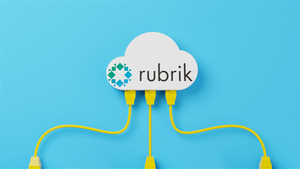
In an era where financial markets are increasingly interconnected, one would expect a degree of uniformity in core lending products. Yet, the world of mortgage rates continues to defy simple categorization, presenting a complex tapestry of varying offers that can leave consumers scratching their heads. Despite broader market trends and Federal Reserve policies, the interest rate a borrower secures on a home loan can differ significantly from one lender to another, and even between two seemingly similar borrowers. This nuanced dynamic highlights the intricate interplay of lender-specific strategies, individual borrower risk profiles, and a constantly shifting economic landscape, with immediate implications for housing affordability and consumer access to credit.
Deconstructing the Disparity: What Happened and Why It Matters
The prevailing narrative often links mortgage rates directly to the Federal Reserve's benchmark interest rates or the yield on the 10-year Treasury note. While these macroeconomic indicators provide a foundational baseline, they tell only part of the story. The current market is witnessing substantial variations driven by factors unique to each financial institution and individual applicant. Lenders, from large commercial banks to smaller credit unions and non-bank mortgage originators, each possess distinct operational costs, profit margin targets, and risk appetites. A highly efficient lender with robust technology and a streamlined process, for example, might be able to offer more competitive rates than one burdened with higher overheads or less efficient systems. Their access to the secondary mortgage market, where most loans are sold to investors as mortgage-backed securities (MBS), also plays a crucial role; a strong investor network can enable lenders to offer more favorable terms.
For borrowers, the picture is equally multifaceted. An individual's credit score is paramount, with those boasting scores of 740 or higher typically qualifying for the most advantageous rates due to their perceived lower default risk. However, other characteristics like the loan-to-value (LTV) ratio, determined by the size of the down payment, and the debt-to-income (DTI) ratio, indicating financial stability, are also critical. A substantial down payment (resulting in a lower LTV) and a manageable DTI signal less risk to lenders. The type of loan – whether a fixed-rate or adjustable-rate mortgage (ARM), a 15-year or 30-year term, or a government-backed FHA, VA, or USDA loan – inherently carries different risk profiles and, consequently, different pricing. Even the decision to pay "points" upfront to reduce the interest rate can significantly alter a borrower's effective cost of borrowing.
The timeline leading to this current state of nuanced rate variations is rooted in several interconnected economic forces as of September 2025. Federal Reserve policy, while currently stable after a series of rate cuts in late 2024, continues to cast a long shadow, with market participants constantly speculating on future moves. These expectations, alongside persistent inflation trends influenced by energy prices, global supply chains, and wage growth, directly impact lenders' cost of funds. Volatility in the bond market, particularly concerning the 10-year Treasury and MBS, also contributes to rate fluctuations. The enduring "lock-in effect" from homeowners with historically low rates, coupled with an imbalance in housing supply and demand, further influences lenders' strategies in managing loan volume and pricing. These elements collectively underscore why a seemingly uniform market can yield such disparate outcomes, making detailed comparison shopping a critical step for any prospective homeowner.
Navigating the Divide: Winners and Losers in the Mortgage Maze
The intricate dance of mortgage rate variations inevitably creates a clear delineation between those who benefit and those who face disadvantages in the market. This divide affects both lending institutions and individual borrowers, shaped by their operational models, financial health, and timing within the economic cycle.
Among lenders, large banks often emerge as relative winners, particularly in environments of higher or volatile interest rates. Their diversified funding sources, including extensive deposit bases, provide a lower cost of capital compared to many non-bank lenders. Furthermore, larger banks frequently retain a portion of their originated loans on their balance sheets as "portfolio loans," giving them greater flexibility in pricing and risk management outside the sometimes-volatile mortgage-backed securities (MBS) market. In contrast, non-bank lenders, which heavily rely on short-term credit lines and the MBS market, tend to struggle in a rising rate environment. Their cost of borrowing increases, squeezing profit margins and often leading to a loss of market share. However, in periods of falling rates and surging refinance activity, agile non-bank lenders like Rocket Mortgage (RKT) and UWM Holdings Corporation (UWMC), with their efficient origination platforms, are well-positioned to capitalize on increased demand, experiencing a surge in volume and profitability. Credit unions, as not-for-profit entities, generally maintain a steady advantage by offering competitive rates and personalized service, often prioritizing member benefits over aggressive profit-seeking, which can make them attractive in varying market conditions.
For borrowers, financial strength and market timing are paramount. Individuals with strong credit scores (typically 740+) and substantial down payments are consistent winners, consistently securing the lowest available interest rates due to their reduced risk profile. The current easing of mortgage rates, with the 30-year fixed-rate mortgage recently dropping to near 11-month lows, presents an opportune moment for first-time homebuyers, who can now access slightly more affordable financing. Additionally, existing homeowners who secured high fixed-rate mortgages (e.g., above 7%) in recent years are poised to win if rates continue to fall, making refinancing a viable option to lower their monthly payments. Conversely, borrowers with lower credit scores remain at a disadvantage, consistently facing higher rates and more stringent terms. The most pronounced "losers" are often homeowners who locked in historically low fixed rates during the pandemic (below 6%). While their current payments are enviable, they are effectively "locked in," as selling and purchasing a new home would mean taking on a significantly more expensive mortgage, thus contributing to the persistent low housing inventory. This dynamic creates a challenging environment for those looking to move or upgrade, as the benefit of their low existing rate outweighs the desire for a new property.
Ripple Effects: Industry Impact and Broader Implications
The persistent variations in mortgage rates, often diverging from a singular market trend, cast a long shadow across the entire housing ecosystem and broader economy. Their influence permeates real estate markets, shapes the competitive dynamics among financial institutions, and carries significant implications for housing affordability and regulatory oversight, often echoing historical patterns.
In the real estate market, these rate disparities directly affect both demand and supply. Higher rates lead to increased borrowing costs and higher monthly payments, dampening housing demand as prospective buyers are priced out or choose to defer purchases. Conversely, even slight declines can significantly stimulate demand, making homeownership more accessible and potentially fueling home price appreciation. A critical contemporary phenomenon is the "lock-in effect," where millions of homeowners who secured historically low mortgage rates are reluctant to sell, knowing they would face substantially higher rates on a new loan. This reluctance artificially constricts housing supply, contributing to sustained home price growth even in the face of elevated rates and compounding affordability challenges. Beyond residential, the commercial real estate sector also feels the squeeze, as higher interest rates increase the cost of capital for developers, potentially stifling new construction and investment.
Within the financial sector, competition among lenders intensifies under varying rate conditions. In a declining rate environment, increased buyer competition often translates to a more crowded field of mortgage lenders vying for business, potentially compressing margins. When rates rise, the pool of qualified borrowers shrinks, forcing lenders to compete more fiercely for a smaller number of originations. The mortgage industry's fragmented nature, characterized by numerous players and relatively low barriers to entry, further exacerbates this competitive pressure. Interestingly, some studies suggest that aggressive local competition can, paradoxically, lead to higher loan rates for some borrowers, as lenders left with fewer or riskier applicants adjust pricing to compensate. The dominance of Government-Sponsored Enterprises (GSEs) like Fannie Mae and Freddie Mac in the secondary market also exerts an indirect influence on pricing power among originators.
The most profound societal impact lies in housing affordability. Even small shifts in mortgage rates can dramatically alter monthly payments, pushing millions of households above or below the qualification threshold for a median-priced home. When combined with persistently rising home prices, the challenge becomes even more acute, particularly for first-time homebuyers. Regulatory responses, primarily from central banks like the Federal Reserve, play a crucial role in managing these dynamics. The Fed's adjustments to the federal funds rate indirectly influence mortgage rates, while post-2008 regulations like the Dodd-Frank Act, overseen by the Consumer Financial Protection Bureau (CFPB), aim to enhance consumer protections and ensure stricter underwriting standards. Historically, periods like the late 1970s and early 1980s saw mortgage rates skyrocket to nearly 19% amidst rampant inflation, making homeownership a distant dream. Conversely, the early 2000s and the post-2020 pandemic era witnessed historic lows, which, while boosting affordability temporarily, also fueled housing booms that eventually led to market imbalances. These historical precedents underscore the cyclical nature of mortgage rates and their powerful role as an economic lever, influencing everything from individual household budgets to national economic growth.
The Road Ahead: What Comes Next
The current landscape of varied mortgage rates signals a new era for the housing market, one characterized by continued adaptation for both lenders and borrowers. In the short term, through late 2025 and into 2026, mortgage rates are broadly expected to remain elevated, generally hovering in the mid-6% range. While some cautious optimism for modest declines exists, a return to the ultra-low rates of the pandemic era is highly improbable. Federal Reserve rate cuts, if they materialize, are likely to have a limited immediate impact, as market expectations are often priced in well in advance.
Lenders will increasingly focus on agile strategies, including product diversification beyond traditional loans to encompass home renovation loans and financial planning. Technology integration, particularly the leveraging of Artificial Intelligence (AI) and automation, will become paramount to streamline underwriting, enhance customer service, and accelerate loan decisions, potentially reducing processing times significantly. Personalized borrower engagement, including tailored financial counseling, will also be critical to guide consumers through complex rate decisions. For borrowers, affordability will remain a primary concern, driving a continued search for creative strategies such as buying points to lower rates or exploring government-backed loans. The "lock-in effect" is expected to persist, contributing to low housing inventory and making purchase decisions challenging for many. Borrowers will also increasingly demand seamless, digital-first lending experiences.
Looking further ahead, beyond 2026, a long-term stabilization of mortgage rates in the low-6% or high-5% range by 2027 is a plausible scenario, although a return to pre-pandemic lows remains unlikely. Lender strategies will evolve towards sustainable innovation, with continuous advancements in AI and machine learning becoming standard. Lenders may transform into "one-stop shops," offering a broader suite of financial services to foster deeper client relationships. Data-driven decision-making will be key for forecasting, risk management, and customer segmentation. For borrowers, long-term affordability solutions will be a consistent focus, alongside continued demand for digital convenience and expert human guidance. Emerging opportunities include catering to Gen Z homebuyers, expanding into home equity lending with innovative products, and utilizing AI and alternative data to extend credit to underserved segments. However, persistent low housing inventory, economic uncertainty, and the ongoing affordability crisis will remain significant challenges, requiring ongoing innovation and potentially new policy interventions to ensure a healthy and accessible housing market.
Conclusion: Navigating a New Mortgage Reality
The persistent variations in mortgage rates, driven by a complex interplay of lender dynamics, borrower characteristics, and macroeconomic forces, represent a fundamental shift in the housing market's operating environment. This isn't merely a temporary fluctuation but rather a new reality where the baseline for borrowing is higher than the historical lows of the recent past, demanding a more sophisticated approach from all stakeholders.
Key takeaways from this nuanced landscape include the critical importance of individual financial health for borrowers, with strong credit and substantial down payments serving as enduring advantages. For lenders, operational efficiency, technological agility, and a diversified product offering are no longer competitive differentiators but necessities for survival. The "lock-in effect" continues to constrain housing supply, exacerbating affordability challenges and forcing a re-evaluation of homeownership aspirations for many. The broader industry impact extends from the competitive pressures among lenders to the overall health of the real estate and construction sectors, all influenced by the ebb and flow of borrowing costs.
Moving forward, the mortgage market will be defined by ongoing technological innovation, with AI and automation playing an increasingly central role in streamlining processes and enhancing customer experience. Lenders will be challenged to balance competitive pricing with robust risk management, while borrowers will need to engage in more diligent rate shopping and financial planning. Investors should closely watch for continued shifts in Federal Reserve policy and inflation data, as these will remain primary drivers of market sentiment and rate trajectories. Furthermore, the evolution of housing inventory, the success of lender diversification strategies, and any new regulatory initiatives aimed at improving affordability will be crucial indicators of the market's direction in the coming months and years. The era of universally low, predictable mortgage rates is likely behind us, making a deep understanding of these intricate variations more vital than ever.






